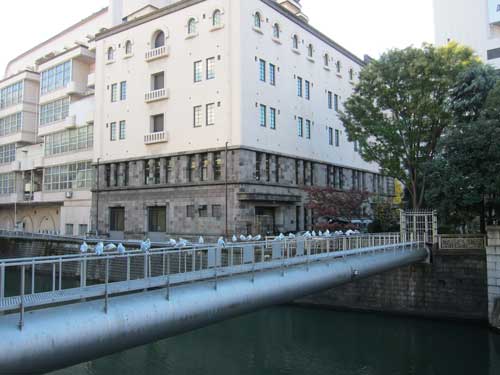
The view outside the apartment looks like a real life snow globe in mid-February.
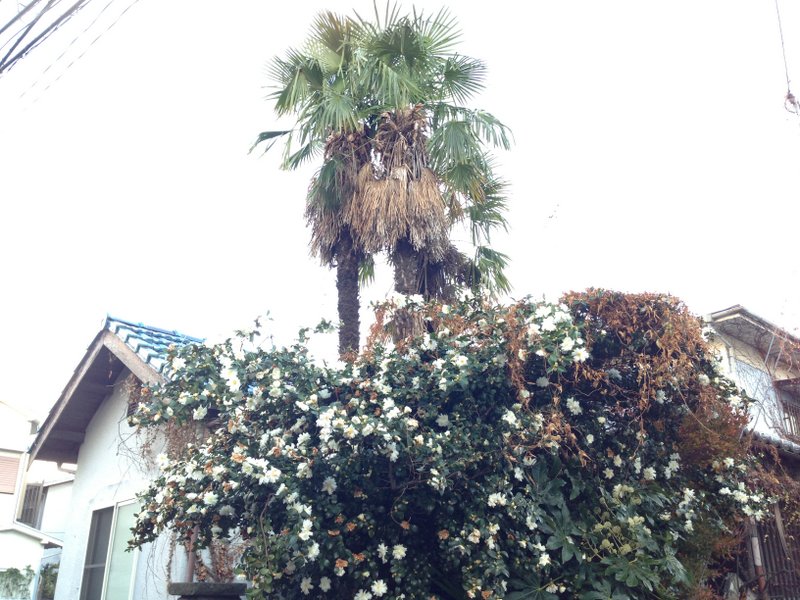
I love this winter scene of rampant white camellia and tall native palms, with plenty of dead fronds still attached to the crown. The wild landscape makes the house cozy and bright in the cold weather.

寒いときに、新宿御苑の新しい温室を勧めます。温室のなかで、熱帯の植物を楽しみながら、外の東京の風景を楽しめます。全部ガラス張りなので、外側に反射している風景もすてきです。
The best place to escape Tokyo’s winter is inside the new greenhouse in Shinjuku Gyoen. I love exploring all the tropical plants, and seeing the fall and winter park landscapes through the glass walls. From the outside, the building reflects the giant trees and clouds.

Hamarikyu is an elaborate garden between the office towers of Shiodome and the harbor full of warehouses, garbage incinerators, and the massive immigration office with no cellphone coverage. Inside the garden, you can learn how the Emperor created a special landscape to facilitate duck hunting that used decoy ducks, falcons, and nets. But on the edges of the garden, you can see the messy metropolis with its relentless accumulation of transportation, commerce, and recently new luxury residential development. I like how on the city side, the stone-lined canal has been preserved, and on the harbor side, an older looking flood gate still regulates the garden’s pond.
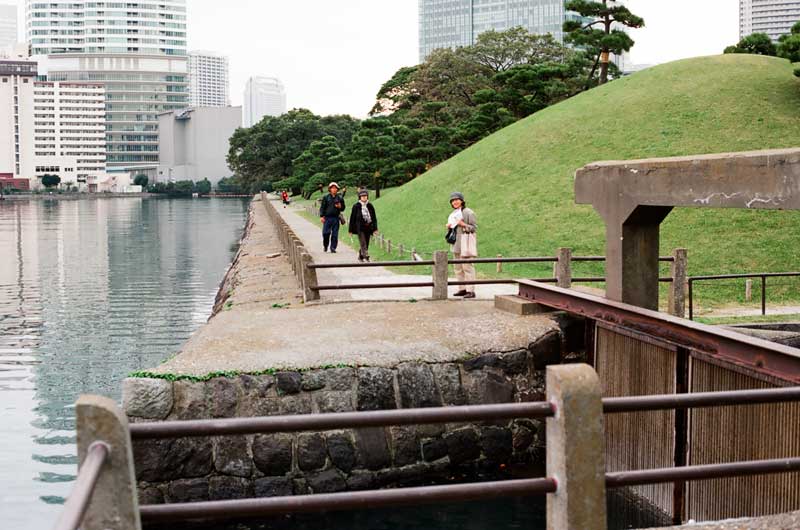

東京で、紅葉が始まりました。辰巳プールからの風景です。
The view from Tatsumi pool.

.@jessmantellと@a_small_labと「動物建築」の打ち合わせの後で、有楽町駅でタヌキの集まりを発見して、楽しかったです。日常の風景を変えられる自由が、東京の働くひとにも住民にもあります。
After an “animal architecture” work meeting with @jessmantell and @a_small_lab, it was a fun surprise to see this gathering of tanukis and their frog and turtle friends in the Yurakucho station.
It’s not uncommon to spot plants and flowers in the Tokyo train and subway stations that appear to be the work of staff seeking to cheer up their environment, even their bath rooms.
I like seeing how Tokyo workers, along with residents, have such freedom to decorate and improve their everyday landscapes.
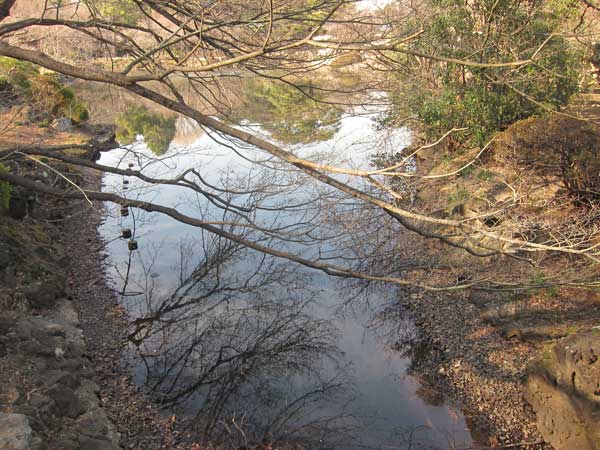
Even on the briskest cold days, it’s such a pleasure to cross Shinjuku Gyoen. The bare cherry tree in the foreground, reflections, and upside down landscape and sky are dazzling on a clear day.

農大の鈴木誠先生のおかげで、足立区の桜の木のバスツアーに参加させてもらいました。今年は東京がワシントンにあげた桜の百年記念です。今では、ポトマックという川の桜は有名な風景になりました。寒い日なのに、たくさんの人がツアーに参加しました。足立区はたくさんの種類の桜を育ています。冬に咲いているの木もあります。残念なことに、桜を植えた場所は高い電線や高架高速道路の下です。
Thanks to Professor Suzuki Makoto at Nodai, I went on a bus tour of Adachi ward’s cherry trees. They are celebrating the ward’s role in the 100th anniversary of Japan’s gift of cherry trees to Washington DC, where they are now a landmark landscape along the Potomac.
It was fun to see how many local people turned out for the tour and ward office symposium. Adachi-ku continues to cultivate many types of cherry trees, including this winter blooming one. Unfortunately, many of the open spaces for tree-planting are marginal spaces: below the high voltage power lines, and along the Arakawa River, where they are drowned out by multiple levels of elevated freeway.
Like most of Tokyo, it all depends in which direction you’re looking. Adachi-ku is proud also that it retains many views of Mount Fuji. Many of these views include the river and also smokestacks and factories.


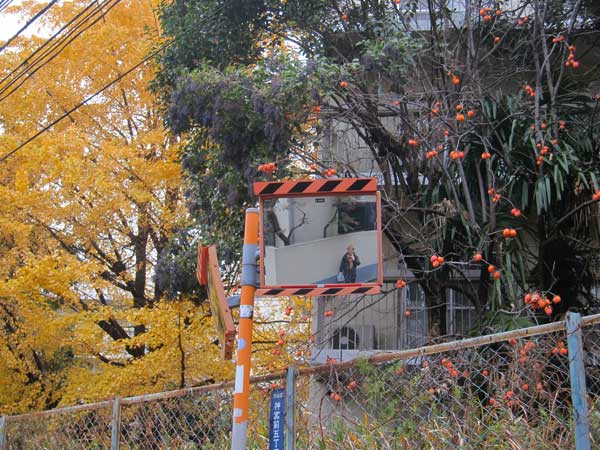
神宮前の路地を歩いているときに、廃墟の団地を発見しました。おそらくここに高級マンションが建てられます。この風景が破壊されるまでは、自然の島のようです。柿や紅葉や野生生物がいます。
Walking in the back streets in Jingumae, I came across this fantastic abandoned housing project. Soon the lot will no doubt be scraped and redeveloped into luxury residences with minimal landscaping. Until then, it’s an island of nature, full of persimmons, fall foliage, and wildlife.


紫式部の果実は薄緑の葉に似合います。この特別な秋の植物は『5倍緑』という都市里山箱のなかで成長します。史火陶芸教室の前を、歩行者が注目しています。季節ごとに、小さい風景ができあがります。史火のホームペジで、この5倍緑箱が二年前にどんなだったかを見られます。
I love how the purple berries pop against the light green foliage. This hardy shrub is a classic fall marker, and a reference to the female novelist of the thousand year old Tale of Genji. Unlike my balcony specimen, which dropped its berries while still green, this one outside Shiho ceramic studio looks fantastic. It’s growing in a 5bai midori, the modular urban satoyama box.
I bought the first box two years ago, and the second last year. They really thrive on this north-facing sidewalk and draw attention to the studio and store. If you click on Shiho’s website, you can see on the home page how small the first one was. It just needs lots of water, and very occasional pruning. There are so many local species that each season has something special and evocative of the Japanese landscape.
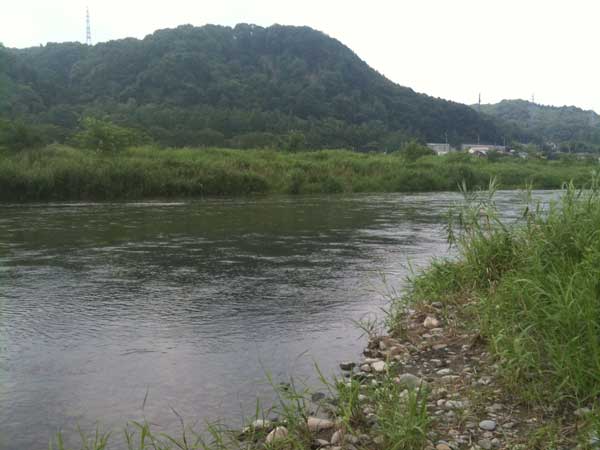
It was a great treat to get a bike tour of the Tama river from Akishima to Fussa with Chris from @a_small_lab. The wildness of this wide river in summer was refreshing, and I was surprised to see the rolling hills on the other side. We cooled off in this quiet stretch of water.
Chris showed me the origin of the Tamagawa josui, a historic canal that brought fresh water to Edo since the mid 1600s. It’s hard to believe this mix of wilderness, industrial decay, outdoor municipal swimming pools, river fishing, and residential life is also part of Tokyo.

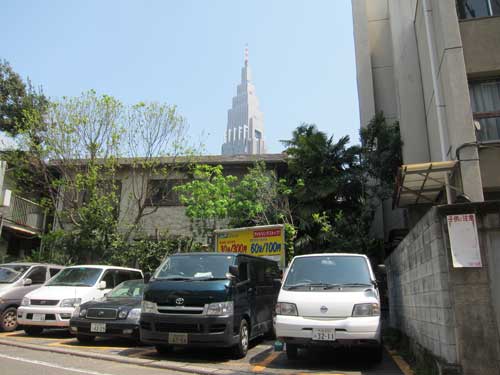
この代々木の写真には、風景が3つ見えます。この組み合わせはとても東京らしいです。
This image sums up my love of Tokyo green spaces. In the background is the iconic Docomo Tower in Shinjuku. In the foreground is a typical Tokyo sight: a lot where the old structure has been raised is now used for hourly parking. In the middle is an older residence whose wild garden is thriving through neglect and the absence of redevelopment. Tokyo is a dense place full of the iconic and prosaic, living nature and concrete structures, traces of the past and constant change.

A miniature fantasy landscape freely shared on a Tokyo curbside.
ミニチュアのファンタジー風景が舗道 の縁石を占領している。
This tiny curbside garden is a fantasy landscape in miniature in what was probably dead space previously between the house and the road. There’s moving water, a palm tree, plants, and several odd characters. I found it just across the road from the giant tree on that former country lane that is now barely visible in Suginami, not far from Opera City.
The contents are fun in their whimsical incongruity. Even in this tiny space, there are several overlapping vignettes. A tiny palm tree joined by a sliver bunny and a character that appears to be a cross between European Romanticism and anime; several Sago palms (Cycas revoluta) beneath some mid-height bushes; and the fountain with water plants and a character trio with a helmeted princess, a red Cobra super-hero whose left arm is a semi-automatic weapon, and an over-sized yellow dog. The fountain features plants, a tiny cliff-side, and bathtub ducks.
The garden structure is very DIY: low-cost, anonymously designed, and highly imaginative. I love that the gardener is sharing this creation with the neighbors and passers-by. The garden’s minimal foundation is constructed mostly of low-lying brick with some wood fencing. I particularly like the tag that shows the flowers that will bloom later.
Thanks again to @ArchitourTokyo for the great bike tour where we discovered this sculpture garden.




In Nihonbashi, you can still see a few old trees preserved alongside rare, pre-war government and corporate buildings.
日本橋には、昔から生き残っている木がまだ少しある。そのわきに、戦前に建てられた政府や企業のビルがある。
Recently I spoke with Canada’s Discovery History channel filmmakers about urban planning in Tokyo, and they requested that we film at Nihonbashi. What was once the center of Edo Japan is now buried beneath an elevated freeway. I used this opportunity to explore Nihonbashi’s surroundings, and came across some interesting government and corporate trees. These sites were not included in the filming, but I found them interesting.
The giant pines outside the old Bank of Japan building are very impressive. While the structure is partly covered in blue tarp and seems unused, the elegant landscaping with more than a dozen, perfectly pruned trees looks magnificent.

I was also impressed to see Mitsubishi’s river-side warehouse at the Edobashi crossing. This building, too, seems to have survived the great Kanto earthquake and the United State firebombing during World War II. In Tokyo, buildings are constantly raised and rebuilt, which almost always means destroying the old landscapes. It’s interesting to spot a few examples of building preservation that also protect older trees and landscapes.
